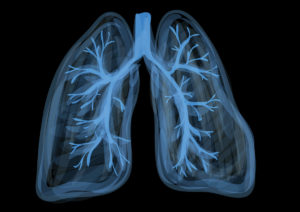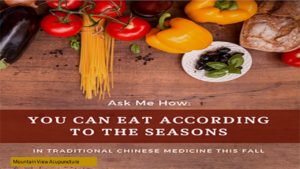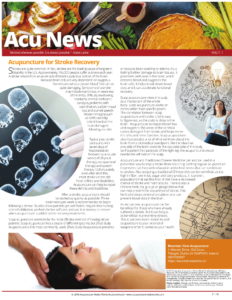- Mountain View Clinic1 Allenton Drive,
Old Court
Tallaght, Dublin 24.For Acupuncture Call Dermot on (085) 703-3087
For Counselling Call Teresa on (087) 6715212 Clinic Hours
Mon10am to 9pmTue10am to 5pmWed10am to 9pmThu10am to 9pmFri10am to 9pmSat10 am to 5.30 pm
Uncategorized
Acupuncture for Stroke Recovery
Strokes are quite common. In fact, strokes are the leading cause of long-term disability in the U.S. Approximately 795,000 people suffer a stroke each year. A stroke results from an acute lack of blood supply to a portion of the brain. Because brain cells are very dependent on oxygen, a few minutes without proper blood flow can be quite damaging. Symptoms of a stroke may include numbness or weakness of the limbs, difficulty swallowing, headache, mental confusion, paralysis, problems with coordination, sudden visual loss and slurred speech. Modern imaging such as MRI’s can help detect how bad the brain damage is following a stroke.
Typical post-stroke care in starts with seven days of hospitalization followed by a couple weeks of physical therapy, occupational therapy and speech therapy. Unfortunately, even after all of this, most stroke victims still have deficits and disabilities. Acupuncture can help to repair these deficits and disabilities.
After a stroke, acupuncture should be started as quickly as possible. Three treatments per week is recommended to begin with following a stroke. Studies show patients get well faster, require less nursing and rehabilitation, perform better self-care and use less money to recover when acupuncture is added to the recovery treatments.
Scalp acupuncture seems to be the most effective method of treating stroke patients. Scalp acupuncture has a couple of different systems, but Zhu’s Scalp Acupuncture is the most commonly used. Zhu’s Scalp Acupuncture prevents or reduces brain swelling or edema, thus halting further damage to brain tissues. It promotes perfusion in the brain, which restores blood and oxygen to the brain cells. It helps break down blood clots and it can accelerate functional recovery.
Scalp acupuncture views the scalp as a microcosm of the whole body. Scalp acupuncture works on zones rather than specific points. The correlation between scalp acupuncture and stroke is fairly easy to figure out, as the scalp is close to the brain. Acupuncture increases blood flow and oxygen to the areas of the cerebral cortex that were damaged from stroke and helps revive the cells and nerve function. Scalp acupuncture also incorporates a lot of what we know about the brain from a biomedical standpoint. Things such as the idea that one side of the brain controls the opposite side of the body. So if a patient had paralysis of the right leg, the acupuncturist would needle the left side of the scalp.
Acupuncture and Traditional Chinese Medicine can also be used in a preventive way to avoid a stroke from occurring. Getting regular acupuncture treatments can help with relaxation and relieving stress that can contribute to strokes. Also adopting a traditional Chinese diet can be beneficial, as it is high in fiber, low in fat, sugar and dairy products. It is proven, populations that eat this kind of diet have a decreased chance of stroke and heart attacks. There is also a Chinese herb, bai guo ye or ginkgo biloba that can help prevent the occurrence of stroke. This herb stimulates cerebral circulation and can prevent blood clots in the brain.
As we can see, acupuncture can be beneficial for those who have already suffered a stroke. But it can be just as beneficial in preventing strokes. This is just one more reason to add acupuncture to your arsenal of weapons when it comes to your health.

Our Lungs and emotions

The organs in Chinese medicine are more than just a physical representation. The organs include not only their physiological function but also mental, emotional, spiritual and elemental qualities that align with nature and the seasons.
The lung season is autumn. This is a good time to protect the lungs from changes in weather by wearing a scarf to keep your neck warm, staying out of wind and keeping your dryness at bay. It’s an excellent time to nourish the digestive system with warmer foods such as sweet and sour soup, steamed vegetables and making seasonal choices at the market. It’s also a good time for letting go and allowing changes to process without repressing emotions such as sadness and grief.
The lungs are known as the “delicate organ”, as they are the uppermost, most superficial aspect of the body and therefore the most sensitive to environmental changes such as wind, dryness, heat, cold and damp. They breathe in the pure air to nourish the organs and let out the impure. According to Chinese medicinal principles the lungs push waste and fluids downwards to help the large intestine, so these two organs are known as paired organs. The lungs transport yin fluids (the yin part of us is what is moist, lubricating) and distribute moisture. They are also in charge of the opening and closing of pores and sweat glands, and they provide moisture to body hair and skin.
The lung channel opens to the nose, governs the voice, its color is white and its flavor pungent. The emotion associated with the lungs is grief. The lungs receive and let go, keeping the movement in and out in a healthy exchange with the outer world. If that exchange is blocked emotionally by grief and sadness, it affects the smooth action of the lungs. When someone is sad, they hold their breath and oxygen is decreased. The emotional blockage of not letting go and the symptom of grief affects the receiving and letting go action of the lungs.
How can you tell if your lungs might be deficient? Some symptoms include frequent colds, asthma, bronchitis, cough, dry skin, fatigue, pain and distention in the chest. Itchy skin, and increased nasal discharge can also be indicators.
Here are some ways to strengthen your lungs:
Breathe: Taking deep-cleansing breaths is an excellent way to keep your lungs in shape. Abdominal breathing, or diaphragmatic breathing, is ideal for keeping the circulation, oxygenation and lymph drainage of your lungs strong. Place your hand on your abdomen and feel your hand rise as you breathe deeply more from your core than your chest. Breathe in and hold for a few seconds, let it out slowly and repeat several times. Singing is also good for the lungs, so belt out your favorite songs.
Exercise: Exercise like tai qi, qi gong and walking keep your lungs in shape naturally, as inhaling and exhaling steadily brings in fresh oxygen and circulates energy.
Healthy Eating for Autumn

The Autumn season brings cooler weather and shorter days. As with any season, the world adjusts accordingly. Plants begin to go dormant, animals start scrounging for food to help get them through the upcoming winter months and humans start winterizing everything. Heavier clothing becomes more commonplace.
As Autumn descends on the land, it reminds us we need to start cutting back on the numerous cooling foods that are consumed during the summer months. Things like raw foods, salads, juices and fruits need to be decreased because they can create too much cold in the body. This is just one principle followed by Traditional Chinese Medicine.
There are many facets to TCM and nutrition is one of the most important. The ancient Chinese observed what took place in nature and followed those cues accordingly. So when the season changed to Autumn and the amount of daylight decreased and the temperatures cooled, the Chinese began to eat what was available. This is what it means to “eat for the season.” By eating according to the season, we can avoid many illnesses and diseases. If we continue to eat raw, cold foods during the cooler fall and winter months, then we set ourselves up for digestive problems, colds, sinus infections and even painful joints.
When a person eats seasonally, they will inevitably notice certain foods are no longer abundant or available. In the Autumn, we should fill our cupboards with dried foods, heavy grains, seeds and roots that can help move the body’s energy or Qi (pronounced “chee”) inward.
Autumn is also a time to slow down. This means we should cook food for longer periods of time on lower heat. How we cook food will affect how the body tolerates it and how the energy is utilized. Some examples of how to cook for the season of Autumn include making soups and stews, using a slow cooker, roasting and baking foods. These methods create a deeper warmth and supply greater energy from the food.
Foods that are nourishing to the lung are very important during the autumn. Since many people get sick during these months, lung tonifying foods can be very beneficial. This includes foods like ginger, onion, garlic, pears, walnuts, miso, navy beans, almonds asparagus, broccoli, apricots, bananas, apples, plums and grapes.
The dryer weather can also cause chapped lips, a dry nose, an itchy throat, rough skin and even dry stools. To counter these issues, it is recommended to eat foods that promote the production of bodily fluids, such as nuts, seeds, pears, pumpkin, honey and a traditional Chinese porridge known as congee.
Animal products tend to be warming and grounding by nature. And for those who eat meat, increasing the intake can be beneficial during the cooler autumn months. As mentioned before, roasting, baking or stewing the meats is the most beneficial.
When we follow the cues given to us by nature, we can maintain a very healthy existence. To learn more about eating according to the seasons in Traditional Chinese Medicine, contact your local acupuncturist or TCM practitioner.
Staying Focused
Acupuncture and Staying Focused
A recent study published by the Journal of Neural Regeneration Research found acupuncture treatments can lead to improved cognitive function. Functional brain MRIs showed an increase in the communication areas of the brain associated with higher level cognitive function and memory. When cognitive function is improved, so too is one’s ability to stay focused and on task. This study also concluded acupuncture treatments can increase neural plasticity, which decreases naturally as we age. All of this demonstrates acupuncture can indeed improve overall brain function, allowing people to live more fulfilling lives.
Staying focused can be challenging in the world we live in. We are constantly bombarded with sights, sounds, smells, interruptions and more. It can be frustrating. A recent study by Microsoft found the average human has an attention span of only eight seconds! By comparison, a goldfish has a nine second attention span. We, as a species, can’t even remain focused as long as a goldfish. This speaks volumes about the state of the world.
Part of the problem is that our bodies were designed to move and we have become too sedentary. Our nervous system doesn’t know how to respond to this. And it also affects our muscles, tendons and circulatory systems. The more time we spend on our phones, tablets, etc., the more stagnant everything becomes. Our muscles shorten, tighten and atrophy, our circulation becomes sluggish and our brains foggy. For everything to function properly, you have to get up and move. But there are other ways to increase focus and concentration.
Traditional Chinese Medicine (TCM) can be very helpful when it comes to improving focus and concentration. There are specific acupuncture points, that can be utilized.
One of the most commonly used acupuncture points for improving focus is called Du 20 or Governing Vessel 20. This point is located on the top of the head, midway between the apexes of both ears. Du 20 has been noted to improve mental clarity and awareness, while also enhancing memory.
Yin Tang is another favorite point of licensed acupuncturists. Yin Tang is located between the inner ends of both eyebrows. Yin Tang improves concentration and memory, while also clearing the mind and lifting the spirits, If you or somebody you know suffers from attention deficit issues, acupuncture might be exactly what they need to get back on track. Ask me to find out how acupuncture can help!


